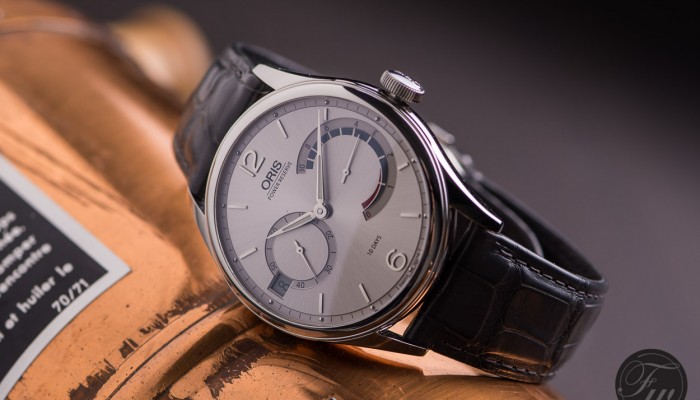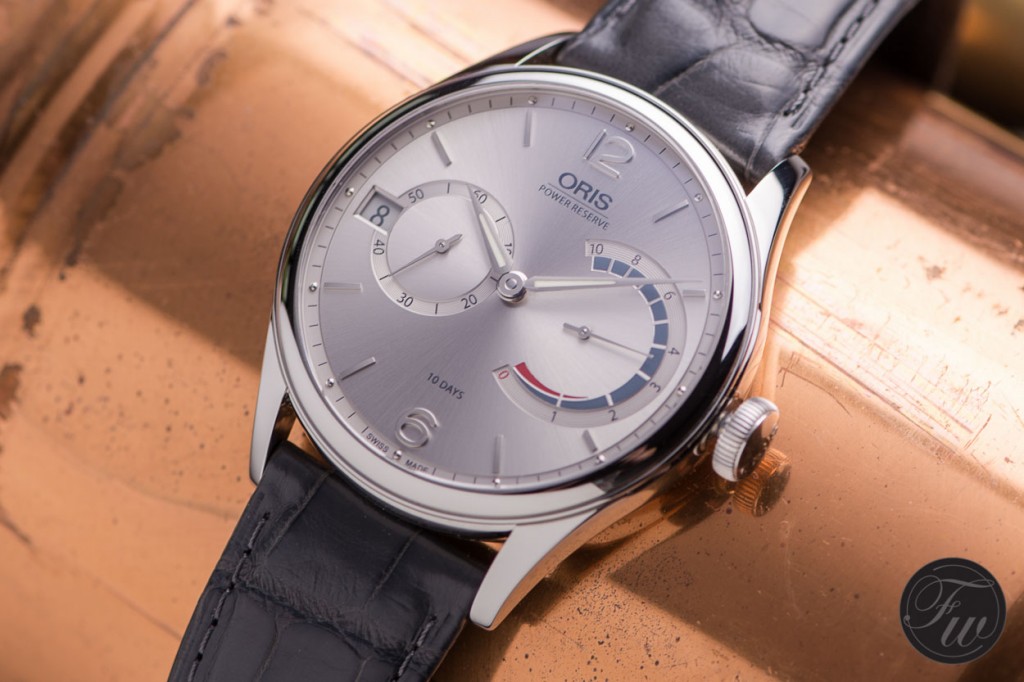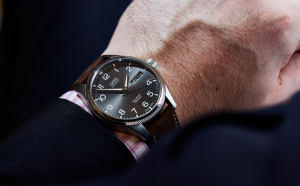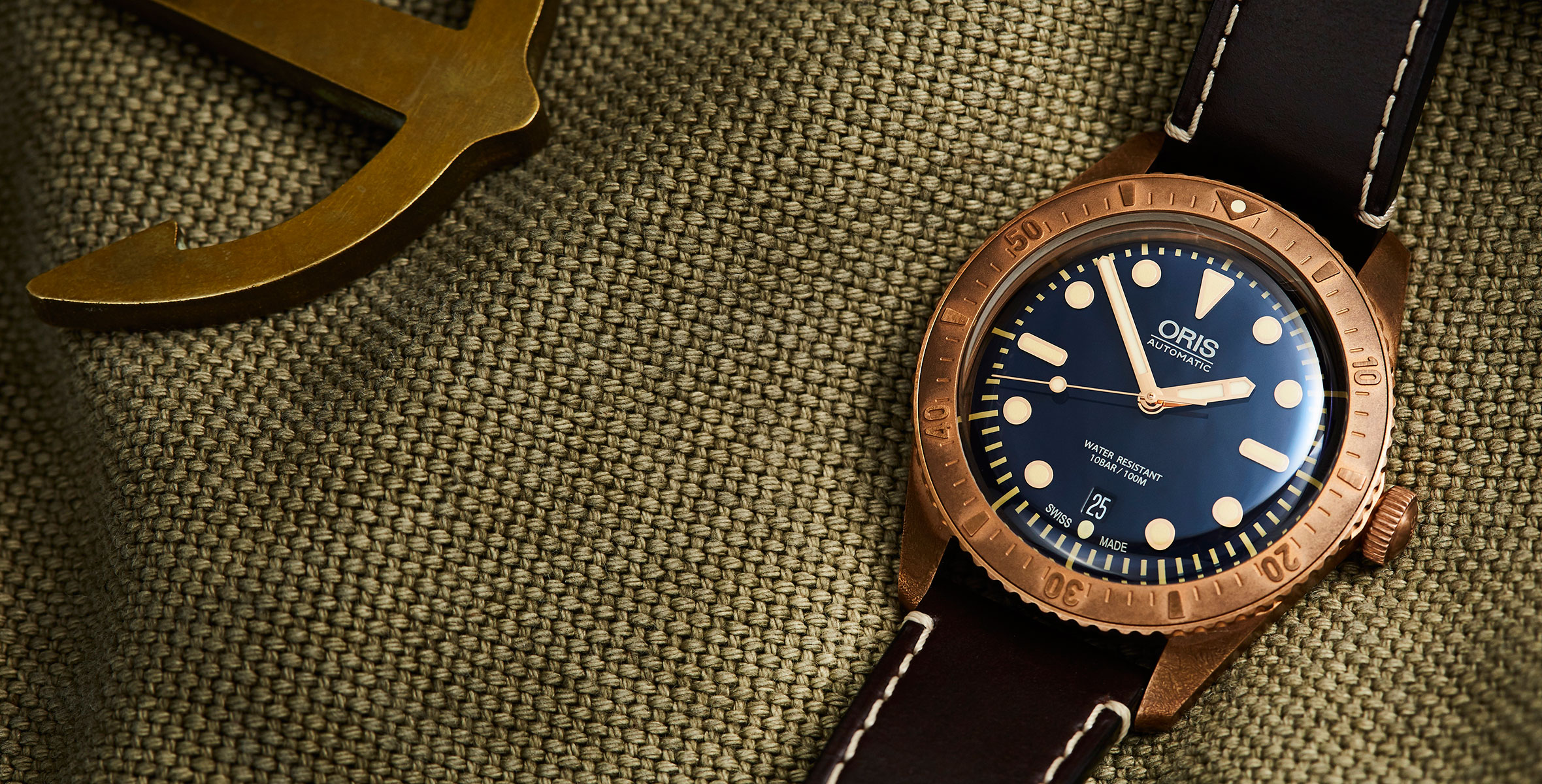
“Real watches for real people” is the slogan of Oris and although I seldomly take these kind of lines very serious, this one does make sense actually. Real people, like you and me, who have to save-up for a nice watch, a real watch. Don’t be mislead by all the images of tourbillon watches or minute repeaters shown everywhere, they only represent a very small market. Oris showed us that they were able to move the watch industry, or more important, its consumers, with their €1700 Euro Sixty-Five divers watch. Where a lot of other brands were occupied last year with increasing prices and trying to justify these to their clients (retailers and consumers) during the SIHH and BaselWorld, the talk of the town was Oris with their Divers Sixty-Five timepiece.
So, how does that work for the Oris Calibre 111 – part of the Oris Artelier collection – that I am reviewing here? It has a €5100 Euro price tag, which is far away from the €1700 Euro Sixty-Five watch. Before I want to try to answer that question, let’s have a look at the watch first.

It is interesting that Oris just named this watch after its new in-house developed movement. Sure, it is also being used in the Oris Big Crown Big Pilot watch, but for this timepiece from the Oris Artelier collection, the name of the watch equals the movement reference. In 2014, Oris introduced their in-house developed caliber 110 movement for their 110th anniversary (Oris was founded in 1904) and this immediately gives away where caliber 111 comes from and what caliber number we can expect this year in Basel.
The caliber 110 movement was only used in their limited edition anniversary watch in 2014, only 110 pieces made in stainless steel and another 110 in 18kt gold. The new caliber 111 is based on the same design, but has an additional date aperture and is not limited or restricted. This 34mm movement is currently being used in 11 different Oris references. It is a hand-wound movement with a central hour and minute hands, small seconds at 9 o’clock and a power reserve indicator at 3 o’clock. The power reserve indicator is non-linear, as you can see on the image above. It also has a small red indicator when things get a bit critical concerning power reserve and the movement needs a bit of winding. With a power reserve of 240 hours, an excellent companion for weekdays for instance and you’ll be able to pick the watch up again after the weekend without having to correct the time and date.
The Oris Calibre 111 case measures 43mm but due to its sleek design it sits very comfortable on the wrist. Not a single moment I was thinking that it looked too big for a classic watch. The dial is very large and the bezel very thin, which makes it appear that the case is almost invisible except for the thin lugs. It is a bit of an optical illusion of course, as the high polished bezel and case band are certainly good for a few extra millimeters. The lugs are curved and bend a bit downwards to the wrist, without actually touching the wrist like so many other watch cases do (and I don’t like them sticking in to my wrists). The watch rests nicely on the wrist due to its flat case back (and sapphire crystal).
At a price of 5100 Euro (including VAT), this Oris Calibre 111 is a higher priced than most other Oris watches. You could say that 5100 Euro brings them into a difficult position, as consumers can also buy an Omega with Co-Axial in-house movement or Rolex Datejust for example. However, you could also say that for 5100 Euro, you get a watch with in-house movement that has an interesting feature (10 day power reserve) instead of a rather plain watch with in-house movement. Or better said, do you want to be the guy with the same Rolex or Omega on the wrist as your friends and co-workers or do you want to be a bit different? Not everyone is in favor of wearing a watch from one of the big brands.







